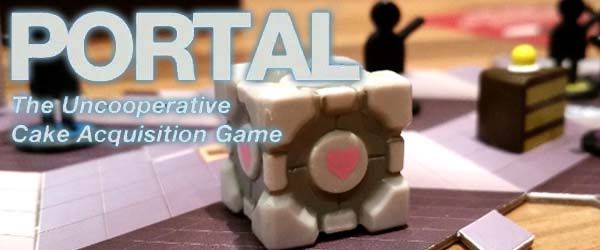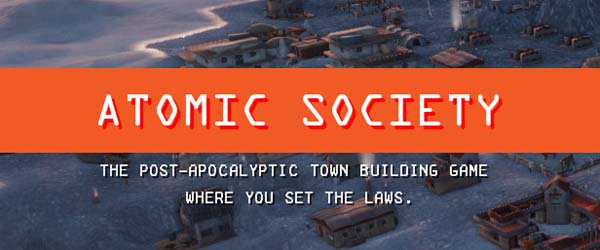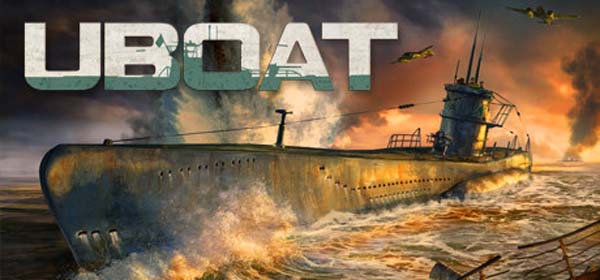
Portal is one of the best and most successful video games ever made. In the current climate of table top board game manufacturers trying to license every property that they can possibly get a hold of, I guess it only makes sense that there would have been a board game based on the Portal video game. But what could a board game designer possibly do with the physics and gravity-bending environmental puzzle-solving concepts of the 2 Portal video games? Cryptozoic's answer was to not even really try. While they did manage to come up with a unique and novel board game design, it's a design that I don't feel really does justice to the title's namesake.
You will be tested, and then there will be cake
Portal: The Uncooperative Cake-Acquisition Game is based around a modular, evolving board concept. 15 tiles are placed on the table in three rows of 5. At the end of each player's turn, one tile is removed from the right edge of the board (the "Old Edge"), flipped over, and moved to the left edge of the board (the "New Edge"). If a player controls a majority of the test subject pieces in the removed tile, he or she is given a set of rewards printed on the tile. This may include being able to place additional test subjects in order to establish more control over the board, being able to place or move a turret or Companion Cube figurine, or placing a victory point token on the board (which takes the form of a plastic slice of cake).
Any player piece(s) on the removed tile are also destroyed. Test subjects are returned to the respective player's supply, but any cake slices (which are victory points) are placed in the "Incinerator", and are removed from the game permanently. The objective of the game, thus, is to place as much cake on the board as you can, while also trying to keep that cake away from the old edge of the board so that it does not become incinerated. What makes this a somewhat challenging puzzle to solve is that the conveyor belt nature of the board is constantly pushing everything towards incineration.
Tiles move from one end of the board to the other, like a conveyor belt.
Each players' test subject tokens can pick up a piece of cake (belonging to any player) and carry the cake with it when the test subject moves. This is how players protect their own cake from the incinerator, but it also allows other players to pick up a rival's cake and move it closer to being incinerated. Thus, the competitive and subversive element is introduced. Players must try to maximize their own resources, while simultaneously trying to minimize their opponents' resources.
Oh, and there's also a couple of portal tokens which allow test subjects to move long distances across the board (and potentially take cake with them). And there's also a GladOS cardboard cutout, which does absolutely nothing except to mark which test chamber tile is being incinerated and recycled. The actual portals in the game's namesake, and the primary villain of the games, thus feel under-utilized. The portals just provide an extra opportunity for long-distance movement, but the game is completely playable without including them at all. They aren't even remotely necessary -- let alone fundamental -- to the board game's design, the way they are in the video game.
Turret and Companion Cube are nice 3-D plastic models,
but GladOS is just a cardboard cutout.
It's also a shame that the GladOS token is not a 3-D plastic model. The turret and Companion Cube are both plastic models and look really nice, so it's a shame that GladOS didn't get the same treatment. If she had, I could easily see this game's pieces becoming part of a nice little display diorama on a shelf somewhere when they are not in use for actual play.
In general, the board game lacks the spatial puzzle-solving element of the video game. The board is constantly in flux, and so a large focus of the game is on manipulating the physical space of the game board, and there is a certain degree of spatial-puzzle-solving present. But from my experience, most of that manipulation feels pretty rote and predictable. While there are certainly the occasional opportunities for really creative plays (especially when ability cards are used to modify various game rules or give the player extra powerful actions), the bulk of the game is pretty straight-forward.
[More]
4d8c2ed3-71aa-4dfa-8725-7de9aa00df1f|0|.0
Tags:Portal, Portal: The Uncooperative Cake Acquisition Game, Portal 2, Cryptozoic, Valve, Steam, GladOS, Cave Johnson, Chell, laboratory, test chamber, cake, turret, Companion Cube, Matt Hyra

After going back and revisiting Cities Skylines for its Airports expansion and being thoroughly underwhelmed, I decided to did into my Steam backlog for some other lightweight city-builders. Far Road Games' Atomic Society had just left early access in August of 2021, so I went ahead and downloaded it to give it a try. And I was underwhelmed again.
Atomic Society just doesn't have enough content to keep me playing for very long, and the content that it does have is not nearly as engaging as I would like for it to be. It is a town-builder with a post-apocalyptic theme that seems to be heavily inspired by Fallout (possibly by Fallout 4's settlement customization mechanics). In fact, despite being a town-builder, Atomic Society requires the player to create an avatar character whose backstory is that they had emerged from a fallout shelter and is attempting to lead a band of wasteland survivors to a new home. So yeah, it's basically what you get if you imagined Fallout 4's settlement management in the form of a top-down city-builder instead of a first-person shooter. Sounds good on paper, but Atomic Society is far from the best possible take on the subject matter.
Imagine the settlement-building of Fallout 4 ... but without any of the personality.
Wandering alone
New buildings are few and far between. Because this is a post-apocalyptic game with very scarce resources and population, the total number of structures that need to be built is relatively small (though multiple copies of many basic buildings are required, and I'll be talking about that soon). As such, most of the actual game consists of micro-managing the Town Leader. This Town Leader is usually the one who has to build new structures by hand, and who has to go in and salvage materials from ruined structures and vehicles.
In fact, micro-managing this one character is so critical to keeping your town running, that the SPACEBAR (of all buttons!) is assigned the sole function of automatically selecting and centering the camera on the Town Leader. Usually, I would expect the spacebar in a town-building game to do things like pause or unpause the simulation, or to bring up the build menu or some other important management menu. Nope. In Atomic Society, the most important button on the keyboard is for selecting the Town Leader.
The Town Leader will be doing most of the scavenging, building, and repairing.
Micro-managing the Leader wouldn't be so annoying and tedious if the U.X. for managing him were a bit better. For instance, it would be nice to have a widget in the corner of the screen somewhere that shows what the Town Leader is doing at all times, and a small overview of his current inventory. There's not even a mini-map or hotkeys to quickly navigate to important locations on the map. It would also be really nice if the player could queue up actions for the Leader. Without being able to put multiple actions in a queue, I am stuck having to pause the game every few minutes to check on what he is doing and manually assign him to his next task. I'm constantly stopping the game to tell him to run to a salvage site, then back to a stockpile to drop off the materials, then out to build some building, then somewhere else to repair some building before it collapses, then back out to another salvage site.
All this babysitting gets very tedious, very quickly. Worse yet, when it does come time to actually build things, the need to manage the Town Leader can often get in the way and disrupt the flow of settlement-planning.
It doesn't help that path-finding is completely broken. I'll tell him to go to a ruin site or to deposit his inventory in the nearest storehouse, and he'll circumnavigate the entire map to get there instead of taking a direct route. Or he'll pass by right by a storehouse to get to a different one further away. And if I want him to go to a specific nearby storehouse that he refuses to path to on his own, the only alternative for me is to take manual control and walk him across the map myself using the W,A,S,D keys. It's just miserable. [More]

I haven't been able to organize as many board game sessions as I would have liked to over the past 2 years, thanks to the ongoing COVID pandemic. By the time vaccinations were widely available, and we were willing to have more frequent gatherings, many of my board-gaming friends had returned to work. Many work irregular hours, so it's hard to organize games. And despite limiting gatherings, we still suffered our own COVID infections, and several other potential exposures that forced us or our friends into self-quarantine for a week or two, resulting in the cancellation of some board game plans. And of course, having an infant to take care of doesn't make organizing play dates any easier.
Despite not being able to play board games as much, I've still been buying board games, in the hopes that eventually we'll be able to overcome the need for social distancing and will be able to have larger game sessions again. One such game that I bought last summer is U-Boot: the Board Game, which is an app-assisted World War II submarine management game. The rulebook and "tactical guides" are massive, and the game looks lengthy with a steep learning curve. It's not the kind of game that we can play in an impromptu session. It requires preparation, and a lot of time to practice.
As such, I haven't been able to play it yet. I only downloaded the app and played around for a bit to try to learn the rules. Hopefully I'll get to play an actual game soon.
In the meantime, I decided I could maybe get my U-boat fix by buying and playing a totally different U-Boat: the Game, which is an early-access PC game on Steam. It has no relation to the board game, but feels like it could be.
U-Boat is still in early access when I played it. I'm not sure when it's supposed to come out of early access, but it seems like it's fairly complete and should be ready soon. I don't usually go for early access games. As any reader of this blog will know, I take a [possibly overly] critical view of the games I play, and playing an "incomplete" game can be a frustrating experience. I don't want the frustration of incomplete mechanics and frequent bugs to sour my opinion of a game to the point that I'm not willing to play it at all when it is eventually complete. For instance, I never went back to games like No Man's Sky after playing it on release. It wasn't early access, but it might as well have been considering how shallow and incomplete it felt. No matter how much my friends insist that it's better now, I just don't have the motivation to play it again.
I bought the U-Boot board game, and started reviewing the rules, but haven't been able to play it.
But I was itching for some U-boat action, and the user scores looked good, so I gave this one a try. This game is so "indie", I couldn't even find a website for the development studio; just some social media accounts on Facebook and Twitter.
Early access tutorial
One area that I hope gets a lot of attention before this game leaves early access is the tutorial. Despite taking hours to complete, the tutorial still left me feeling woefully unprepared for the game proper. U-Boat's tutorial teaches the basic mechanics of the game well enough. It taught me how to navigate my sub, how to submerge, how to assign orders to crew, and how to shoot enemy ships and planes using the automated mechanics. What it doesn't teach is any of the actual strategy or technique for operating a World War II submarine, nor does it teach any of the advanced, manual mechanics (like manual torpedo targeting).
How do I deal with escorted convoys? How do I approach without being detected, while still being able to get close enough to identify the ships and attack? Once I launch my torpedoes, what do I do next? Do I wait at periscope depth to confirm the kill? Do I immediately submerge and run away? How do I escape pursuing destroyers? How do I evade depth charges? If I'm hit by a depth charge, what do I do? None of this is explained by the tutorial. I had to spend several Saturday afternoons trying to figure all this out through trial-and-error by save-scumming a single random encounter. It was incredibly frustrating, and I barely had the patience to keep playing.
Tutorial teaches basic mechanics, but isn't effective at teaching strategy.
The early missions don't help ease the player into the game either. I did like 10 patrol missions in "The Black Pit" (the first and "easiest" campaign area), and only encountered a single convoy in the patrol areas, and was only able to sink 1 ship. I would zig-zag around the patrol area, but would never find any enemy contacts. On the way to or from the patrol area, I would often get radio requests to sink a transport with rare tech on board. These would often be escorted by multiple destroyers and a crap-ton of smaller corvettes, and as soon as I would sink one ship, those 3 or 4 destroyers would converge on my exact position and sink me with depth charges. [More]

After releasing 2 full expansions every year since the launch of Cities: Skylines, expansions seemed to dry up after 2020. Sunset Harbor released in March of 2020, and there hasn't been any full expansion since then. I'm not sure if this is the result of Colossal Order shutting down its studio temporarily during the COVID-19 pandemic, or if they have just been busy working on a sequel. I had assumed that Cities: Skylines was done, and that Sunset Harbor would be the final expansion for the game. But that is not the case, as a new expansion was finally released at the end of January 2022.
The Airports expansion is yet another expansion pack using the area-painting mechanic that was introduced in the Parklife expansion in 2018, then re-used in Industries and Campus in the subsequent years. As such, I don't know that I really have much to say about Airports. A lot of the same compliments and criticisms that were already applied to Parklife, Industries, and Campus also apply here.
Campus, ironically, did not teach Colossal Order any lessons
The modular nature of the airport buildings, taxi paths, and runways provides quite a bit of customization. There are 3 styles of airports: a retro-style, a modern style, and an "ultra-modern" style. They are functionally the same, so don't fill different roles the way that different parks, industries, or university types did in their respective expansions. The airports are massive and expensive, but they can be shaped to fit into irregular spaces in or around your city. Unfortunately, there's not nearly as much expressiveness as what we were offered by Parklife.
Airports come in different styles, and are customizable (parking lots and garage are mod assets).
Of course, Airports suffers from the same problems that have plagued the previous expansions that used the leveled-areas concept.
A lot of the modular components are simply decorative and have no function other than to increase the area's abstract "attractiveness". In the case of airports, these include the various hangars, parked planes, and so forth. Even the air traffic control tower is a purely decorative object, rather than being necessary for the airport to work!
I've also never liked how the park areas (and now the airport areas) level up by increasing the total visitors, and industries level up based on the total goods produced. This is something that is easy to achieve by simply waiting in-game months or years for the number to go up, regardless of the size or quality of the park, industry, or airport. Because of that, it can be easy for an airport to jump out ahead in total visitors, such that the area can be leveled up immediately, and at any time, by simply placing new structures that bring the attractiveness up above the required threshold.
Airports level up based on the total passengers, which can be easily increased by simply waiting.
Instead, I wish these areas would level up based on the weekly visitors (or good produced, for industries), rather than the cumulative total. This is a much better metric of the capacity of a park, industry, or airport. This is one of the things that the Campus expansion did a bit better than the others, since the universities level up based on the current number of students and the number of research projects. The amount of students is capped by the size of the school, and the research projects are semi-randomly created based on the funding levels and access to research facilities.
Airports aren't like that. Leveling them up feels much simpler and requires less effort and management from the player. Airports also cannot de-level (like universities could) if you fail to maintain its attractiveness, and since total passenger count is something that can never decrease the way that a university's student attendance can decline -- or the way that weekly passenger count could potentially decrease. [More]
9d933baf-f859-49f8-9255-79e2379ce105|0|.0
Tags:Cities: Skylines, Cities: Skylines: Airports, Colossal Order, Paradox Interactive, steam, PC, expansion, airport, airplane, airline, hotel

While I was neck-deep in the 2020 editions of Axis Football and Maximum Football, another small indie football game slipped under my radar. Legend Bowl was in early-access on Steam for 2 years before its 1.0 release in fall of 2021. Its retro, pixel-art graphics caused me to initially dismiss it as just another nostalgia arcade game -- another remake or knock-off of Techmo Bowl.
But YouTube comments, tweets, and a discount during a Steam sale have finally convinced me to check it out. After all, Legend Bowl was awarded "best alternative sport game of 2021" by Operation Sports, so it must be doing something right!
In those 2 years since going into early access, Legend Bowl has resisted the urge to just release an unfinished game and re-sell annual incremental upgrades to gamers, the way that almost every other sports game does -- whether it's licensed or not. Instead, Super Pixel Games is confident enough in the game that it will continue to sell based on quality and word-of-mouth. Its creator seems more than happy to treat Legend Bowl as a living product, providing regular feature updates, bug fixes, and so forth without feeling the need to charge us full-price, again, for them. The game has been successful so far, and I'm sure there will, eventually, be a sequel. But in the meantime, I am thrilled that I do not have to re-review a nearly-identical football game each fall.
I initially dismissed Legend Bowl as just another Techmo Bowl clone.
Pixel-perfect simulation?
Don't let the pixel-art fool you. Legend Bowl is not just a casual arcade football game. It can be enjoyed that way, for sure. It's simple enough to pick up and play. Nevertheless, Legend Bowl is grounded in sound, fundamental football concepts.
Perhaps the first thing that gamers will notice is the incredibly slow pace of play. The on-field action is slow, allowing the user plenty of time to react to read the opponent and react to what is going on, whether I'm running the ball, passing the ball, or playing defense.
Running is not simply a race to the edge, as in so many other football games that have poor containment and pursuit angles. Cutting back inside, against the grain, is often a great way to pick up extra yardage or break a huge play, especially if my blockers are in good positions to shield my runner's cutback. Reversing field completely is also much more viable in Legend Bowl than it is in any other football game I've played. It feels really good to cut back inside, get behind the lead blockers, and hit a narrow seam for a breakaway play.
Running out of stamina and becoming "gassed" limits the frequency of breakaway plays.
To help get those precious yards, running moves feel really good to execute. Jukes have a nice explosiveness, and are great for side-stepping around lead blockers. The stiff arm is brutally-effective -- maybe a bit too much so. Running moves use a system similar to NFL 2k, requiring the user to mash a face button to sprint, or hold it down to charge up an extra-powerful move. And all these moves consume quite a bit of stamina, which prevents them from being spammed, and requires the user to be deliberate with our use of these moves. Sprinting or using special moves will result in the player becoming "gassed", causing him to slow down considerably. Runners being caught from behind while they are gassed has proven to be an excellent way of limiting the frequency of breakaway plays. It might even be a bit too strict. [More]
|

| 12 | | | | | | | 60 | | 11 | | | | | | | 55 | | 10 | | | | | | | 50 | | 09 | | | | | | | 45 | | 08 | | | | | | | 40 | | 07 | | | | | | | 35 | | 06 | | | | | | | 30 | | 05 | | | | | | | 25 | | 04 | | | | | | | 20 | | 03 | | | | | | | 15 | | 02 | | | | | | | 10 | | 01 | | | | | | | 05 |
|